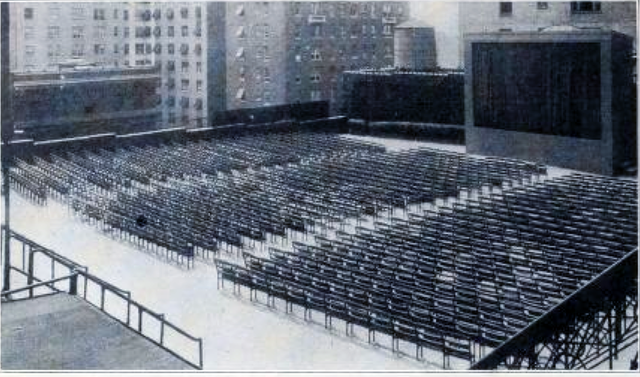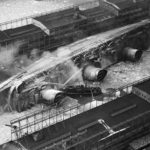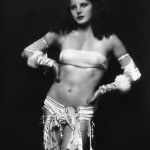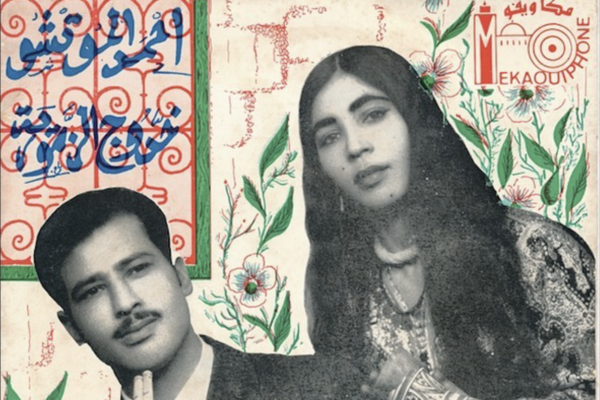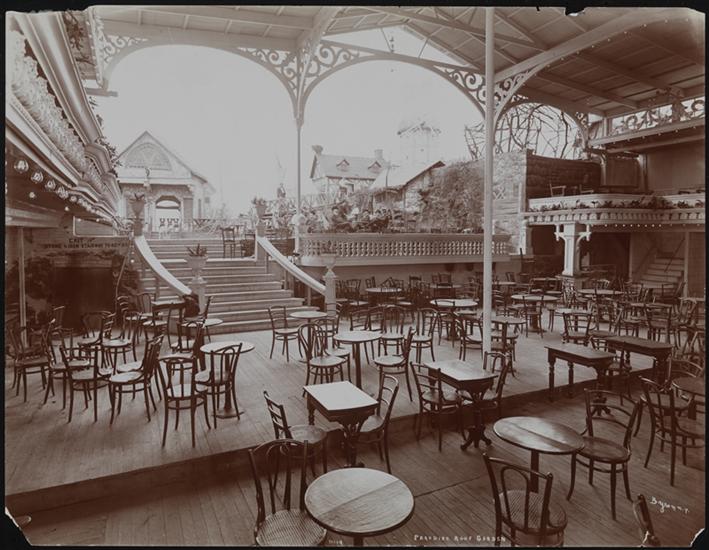
© MCNY
There are some things we’ve lost that I’ll never understand. Midcentury automobile design comes to mind, as well as piano bars & cocktail lounges on our airplanes, hand-painted typography and artisanal signs lining our high streets, and now, I’ll add rooftop theatres to my list. From previous research on the ladies of the Ziegfeld Follies, I’d come across the New York Theatre’s rooftop garden where the chorus girls debuted their show at the turn of the century, but I wasn’t aware that New York City was literally once peppered with rooftop theatre gardens. The Museum of New York City has a very good archive of them, so I thought we’d take a little trip down memory lane and remind ourselves what how Friday nights in the big apple could have been…
New York Theatre’s “Jardin de Paris”
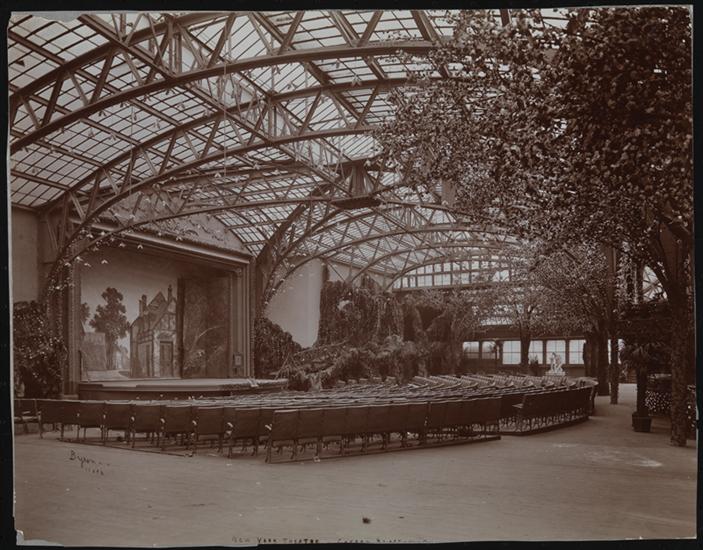
© MCNY
This is the New York theatre pictured in 1901 when it was known as “Cherry Blosson Grove”, decked out in spring foliage. The theatre first opened in 1895 by a German-born businessman with a passion for opera, Oscar Hammerstein (not to be confused with his grandson, Oscar Hammerstein II, the American lyricist who co-wrote The Sound of Music, The King and I, Showboat etc). Originally known as the Olympia Theatre, for a fifty-cent ticket, you could be admitted to the theatre’s two main auditoriums as well as the roof garden, an Oriental café, bowling and billiards facilities.
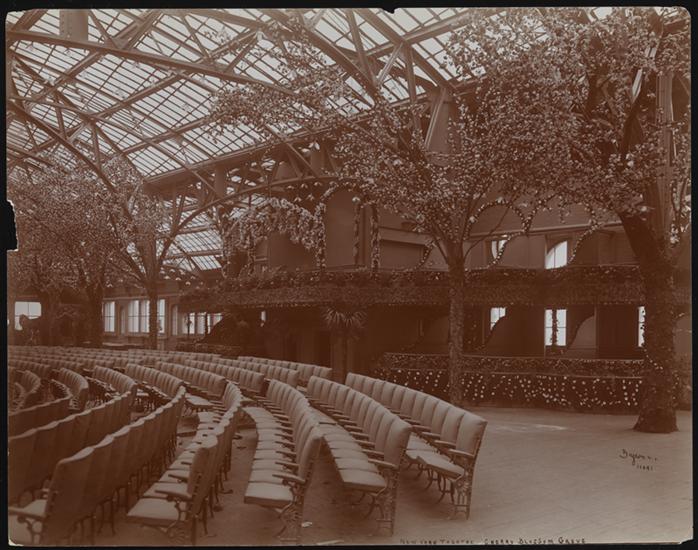
© MCNY
Oscar drove the theatre into debt within a few years and it was auctioned off in 1898 (although he’d later go on to open a more successful one which we’ll see in a moment).
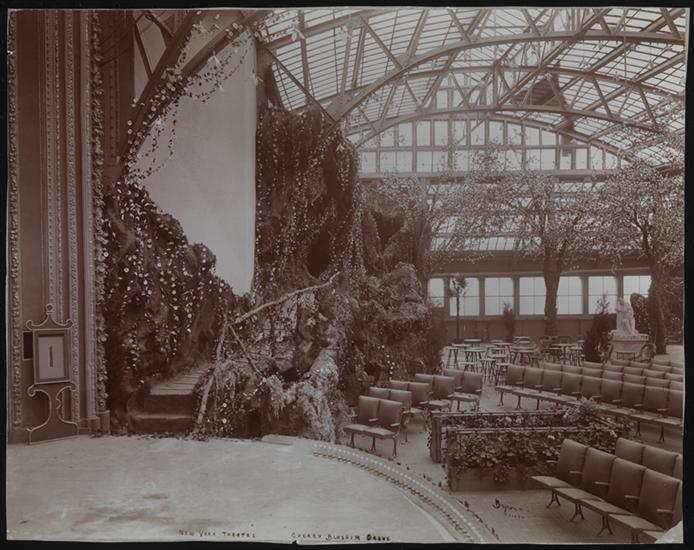
© MCNY
Under new direction, the roof theatre became its own establishment and went through several name changes, including “Winter Garden Theatre”, “Cherry Blossom Grove” (as we see it pictured here), “New York Roof” and finally the “Jardin de Paris” when the Ziegfeld’s Follies debuted their show at the theatre in 1907.
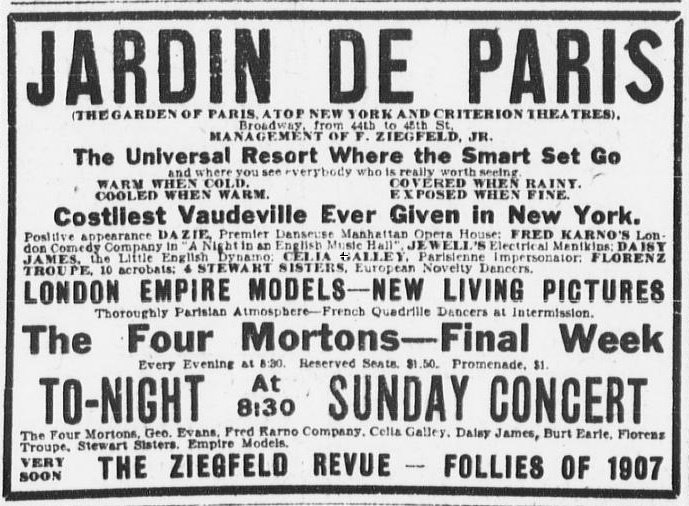
After the Ziegfeld girls had their run, it later became a movie theatre before it was razed in 1935. By this time, roof garden theatres in New York were seeing their demise. Historians suggest the advancements in air-conditioning and the lure of silent film rendered the al fresco sky theatres obsolete. [Head shaking].
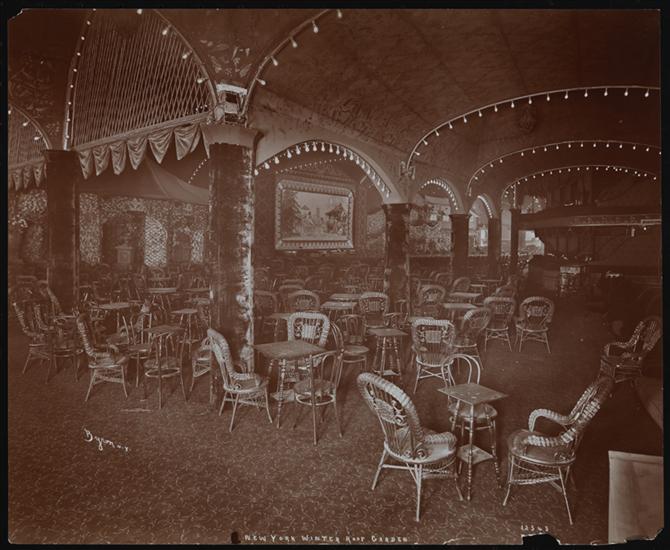
© MCNY
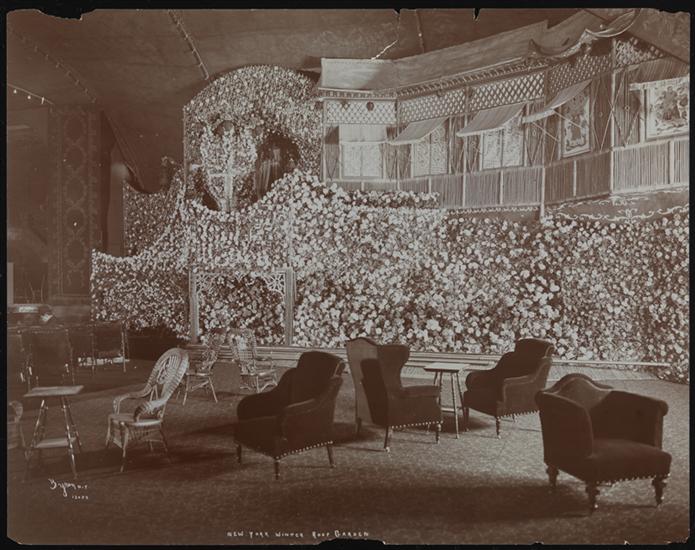
© MCNY
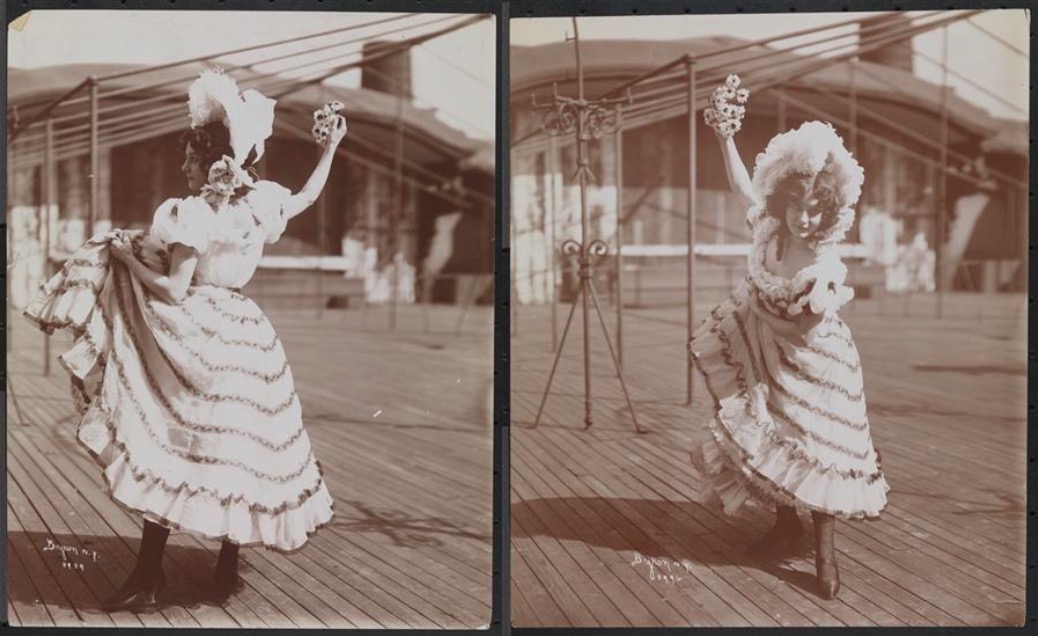
Actors rehearsing on top of the New York Theatre © MCNY
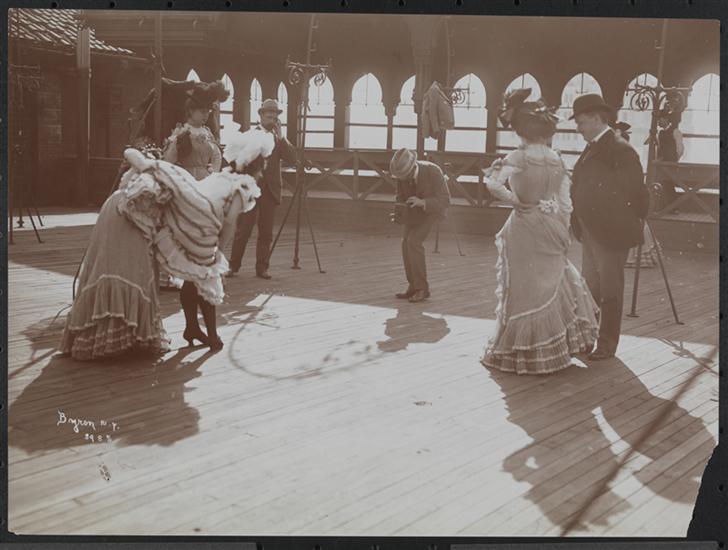
© MCNY
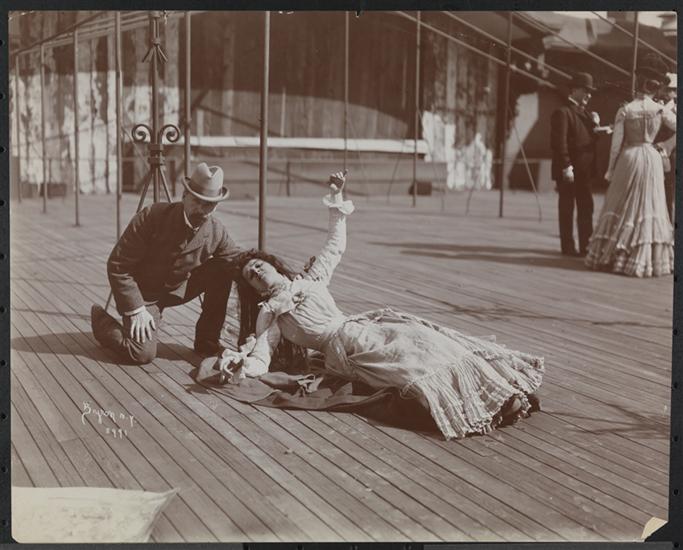
© MCNY
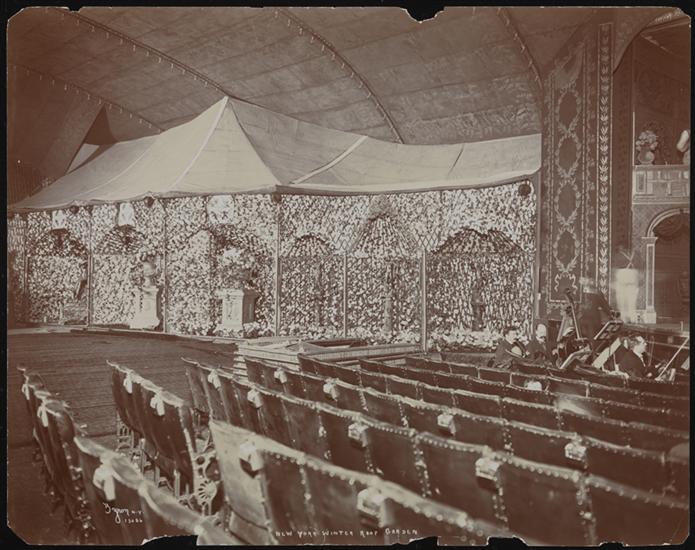
© MCNY
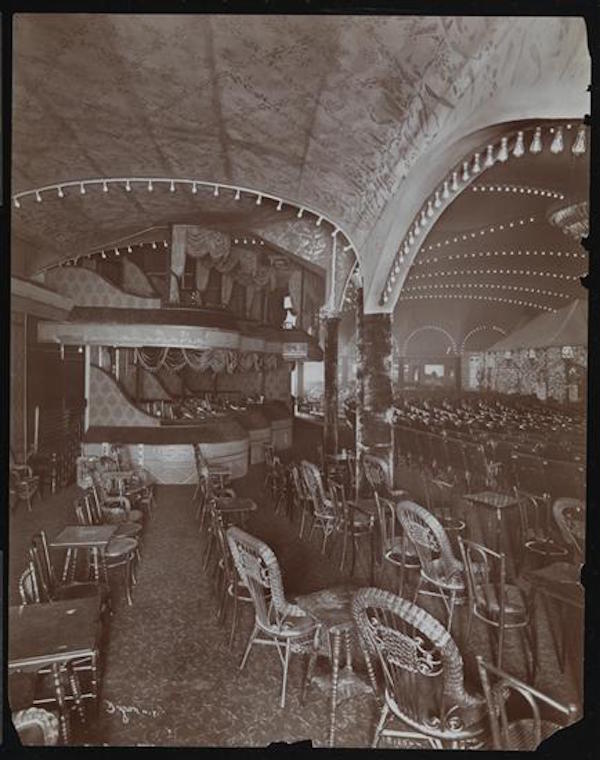
© MCNY
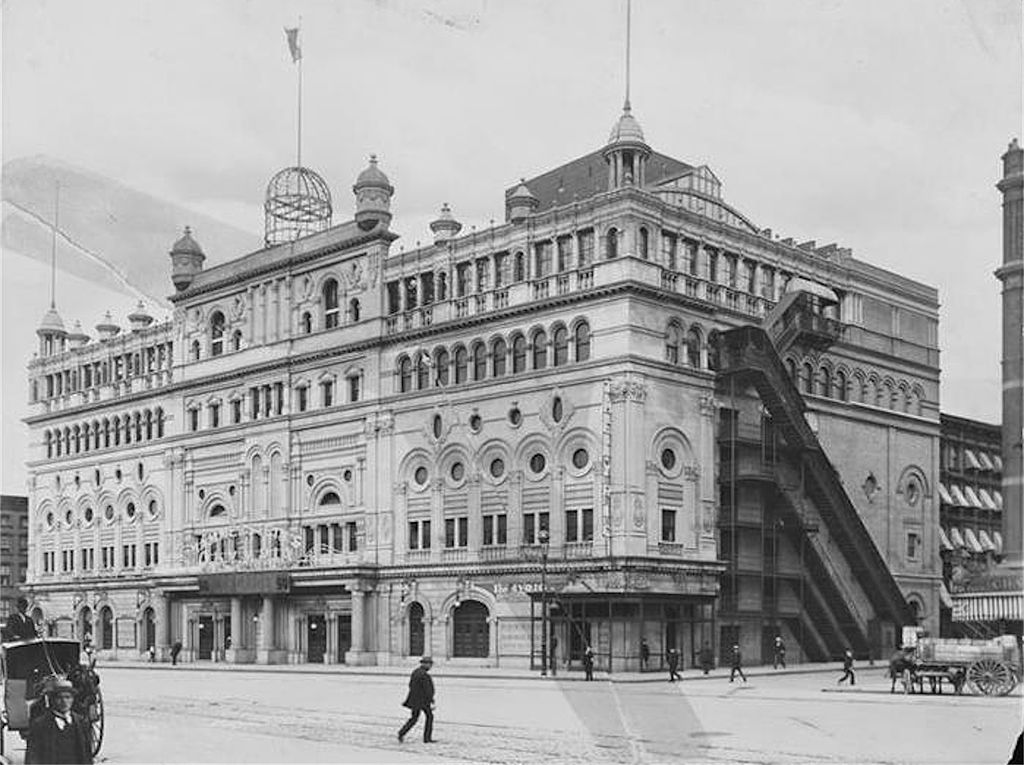
In 2016, during the construction of a Gap and Old Navy flagship store, remnants of the original Olympia Theatre were found under the floors of the previous tenant (a Toys R Us store).
The Paradise Roof Garden of Hammerstein’s Victoria Theatre

© MCNY
So this one was Oscar Hammerstein’s second and more successful attempt at rooftop theatre, built in 1899. The semi-outdoor vaudeville venue was extremely popular for the better part of two decades.
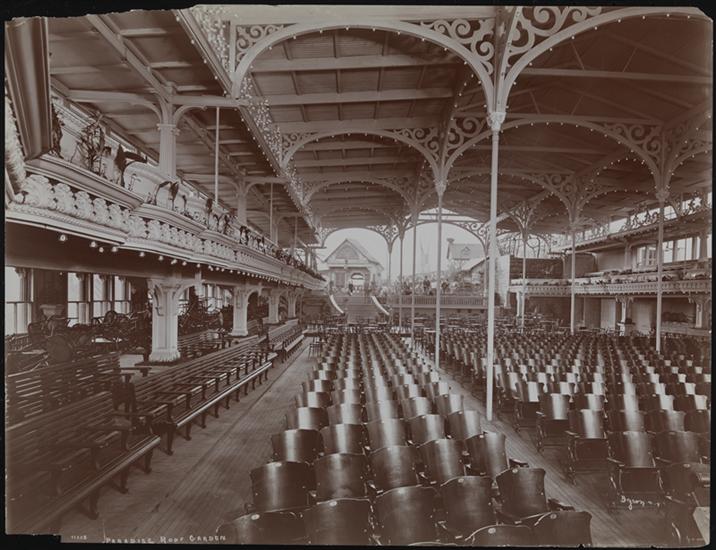
© MCNY
It first opened as a Venetian Terrace Roof Garden, built with a “grand promenade” inspired by the French riviera. Two solid steel elevators took theatre-goers up to the roof that could open and close to accommodate the New York weather.
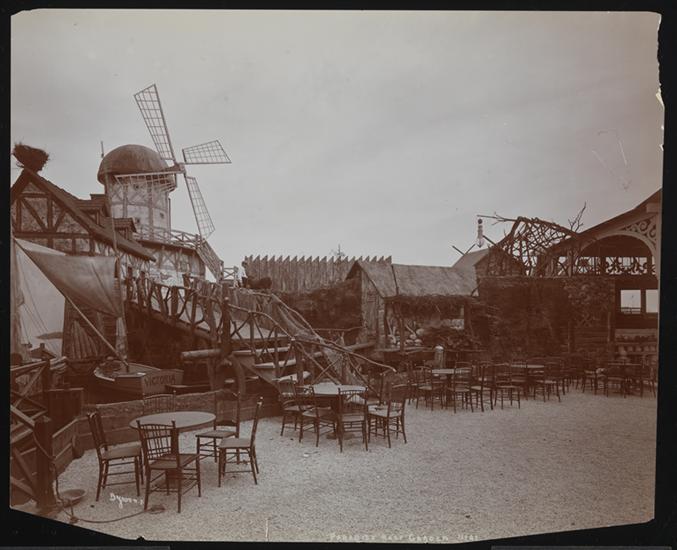
© MCNY
The rooftop even had a pond, a Dutch-style dairy farm and a Parisian windmill.
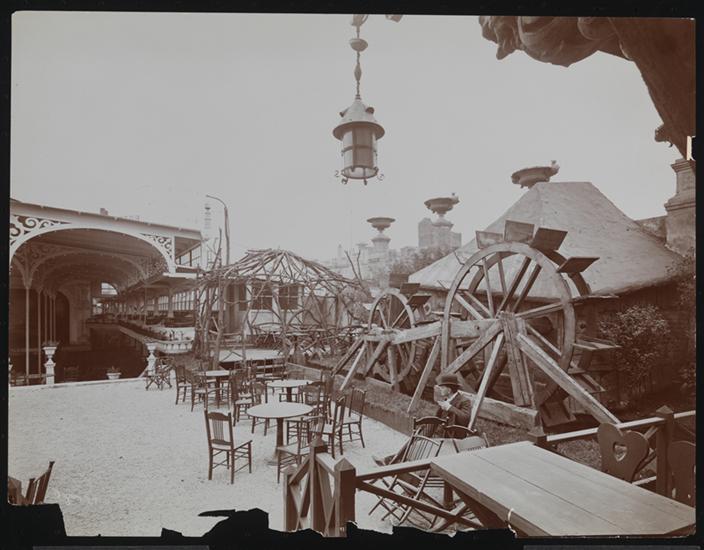
© MCNY
The Paradise Roof Gardens was a perfect for escape the city’s summer heat. In addition to traditional theatre seats, there were café style tables and chairs reminiscent of the Parisian summer guingette for guests to converse while watching wordless entertainment they called “dumb acts”. Some of these acts included Barnold’s Dog and Monkey Pantomime Company, and wire-walker Bird Millman.
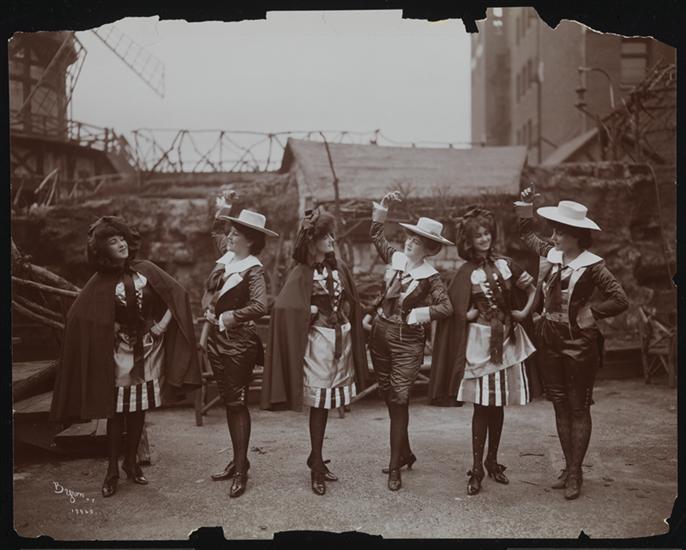
The Byron Company performers atop Hammersteins Victoria, 1904 © MCNY
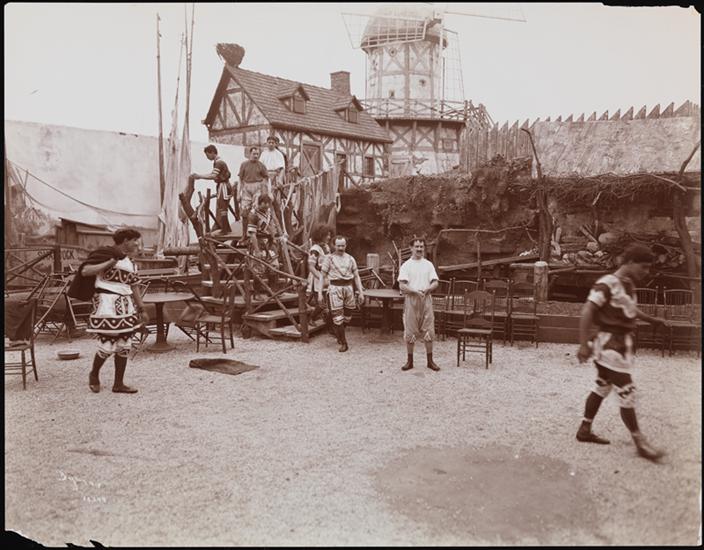
© MCNY
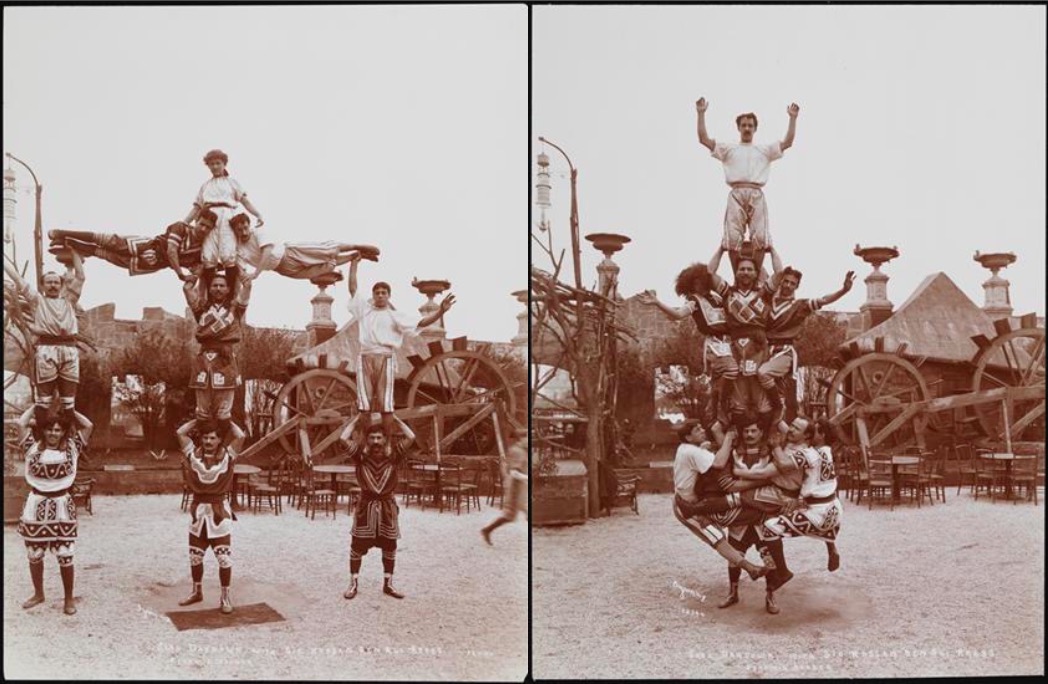
© MCNY
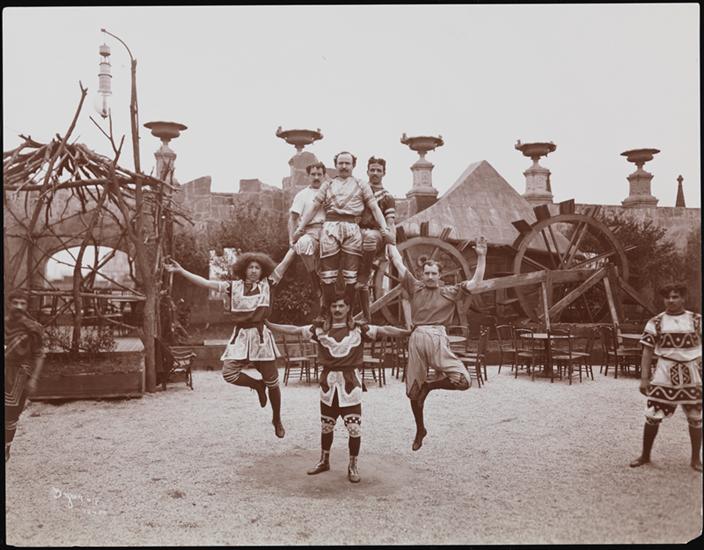
© MCNY
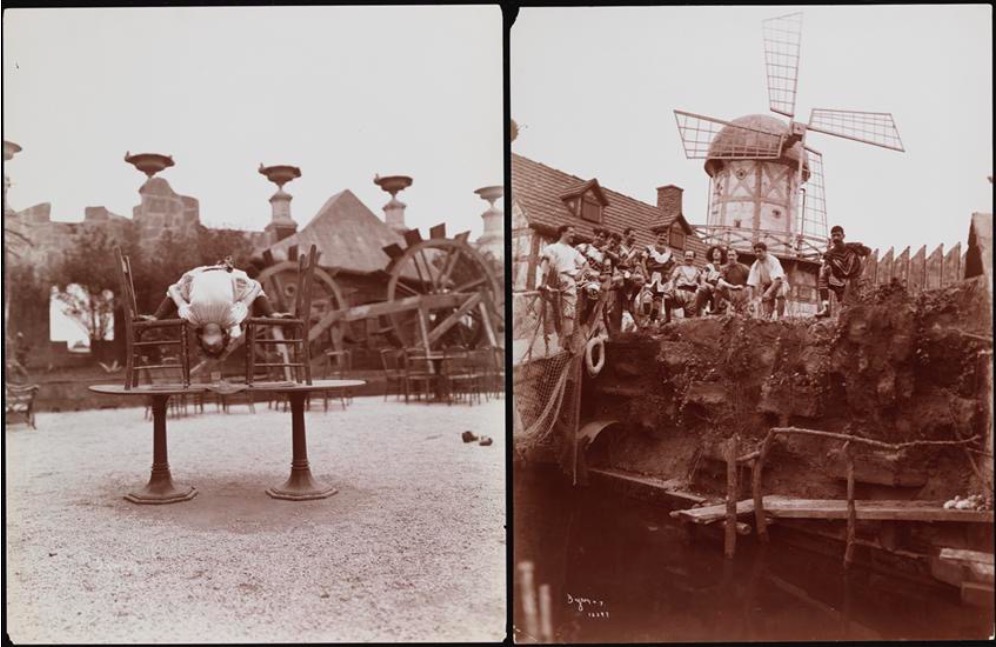
© MCNY
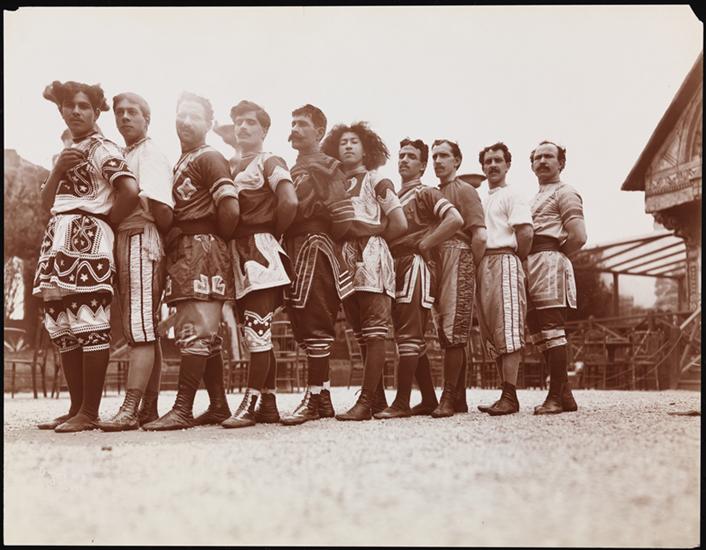
Arabian Acrobats posing as a group on the roof of Hammerstein’s Victoria Theatre © MCNY
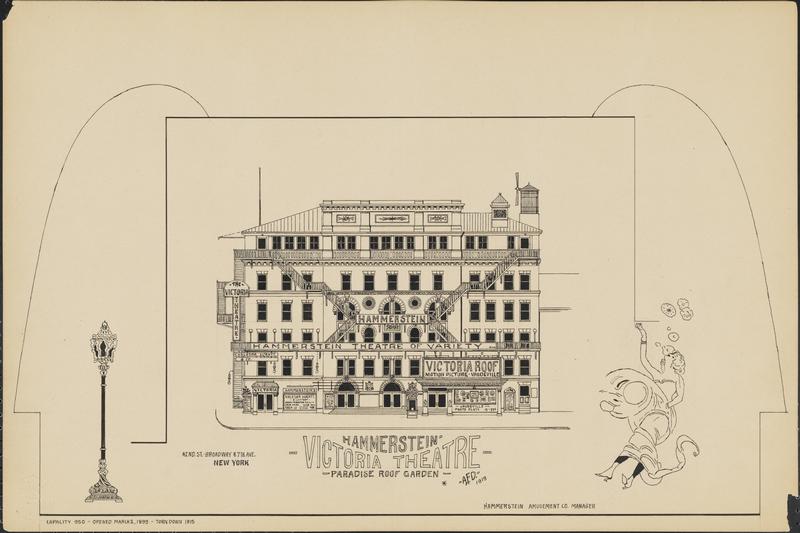
© MCNY
Like the other rooftop theatres, sadly (and incomprehensibly) the Paradise Roof Gardens fell out of fashion and was closed along with the selling of the Victoria Theatre in 1915. Located at 42nd Street and Seventh Avenue, it is now the Rialto Theatre.
Casino Theatre
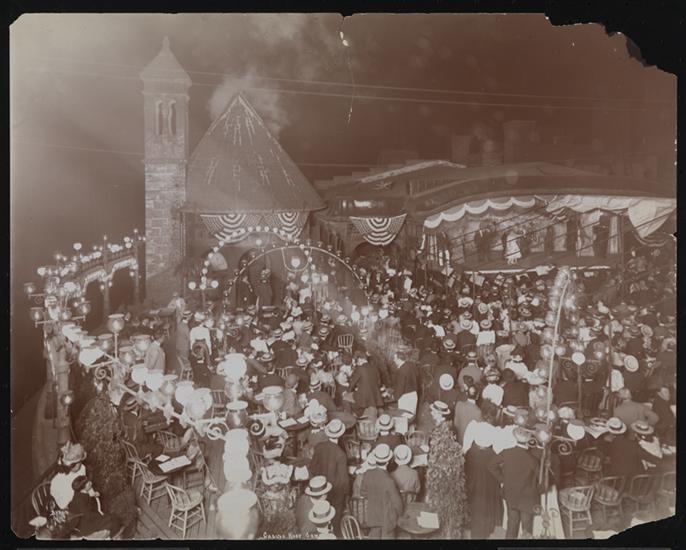
© MCNY
The Casino Theatre at 1404 Broadway, at West 39th Street was the first venue in New York City’s history to open a roof garden in 1890. It originally had a capacity for 875 people. The theatre is perhaps best known for its 1900 production featuring a chorus line called the “Florodora Sextet”.
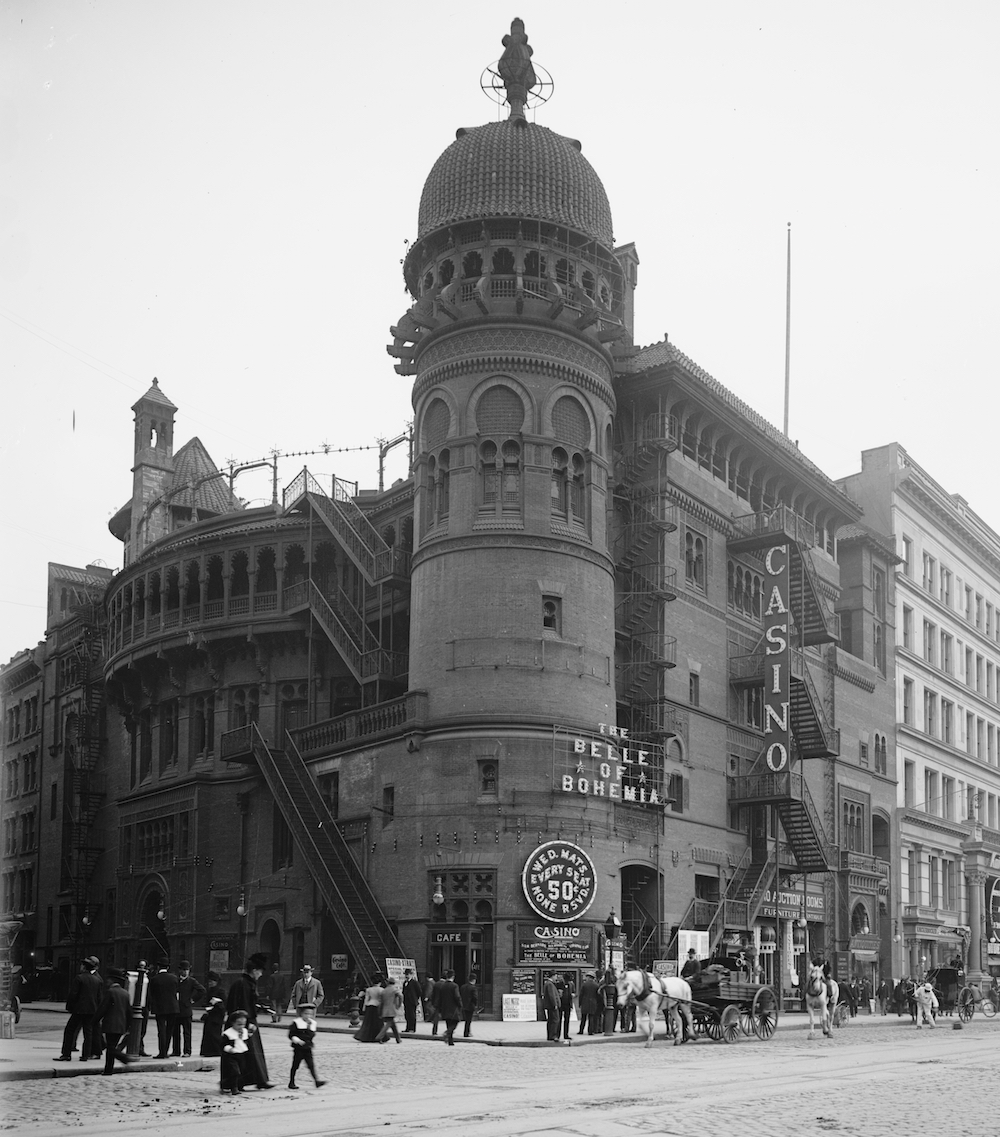
On top of the building, pictured here in 1900, you can see the rooftop theatre peeking over the edge © Detroit Publishing Company
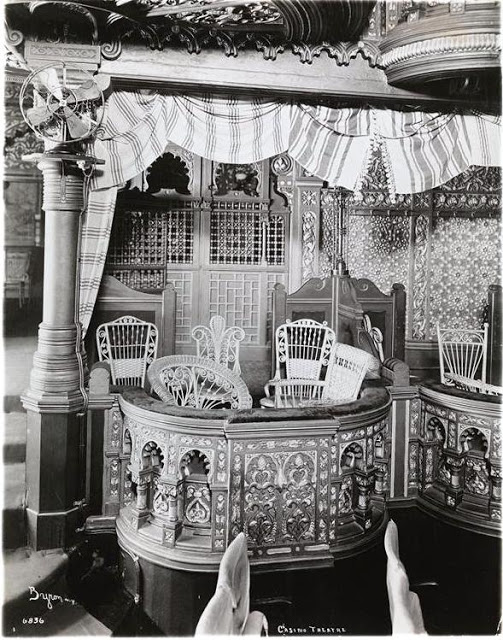
Rattan garden chairs in the Casino Theatre boxes. © MCNY
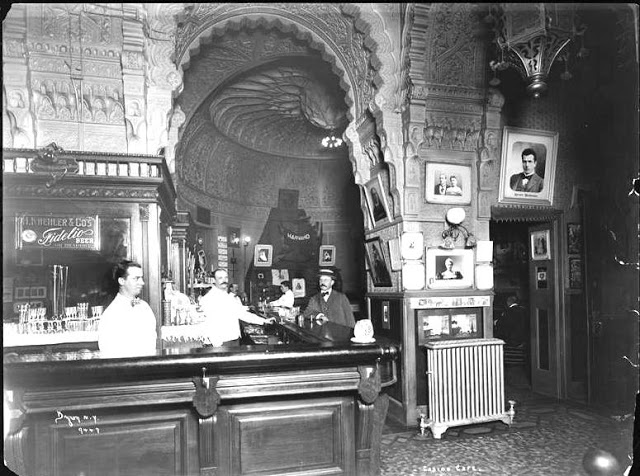
Casino’s Theatre Cafe © MCNY
The Casino Theatre held on until 1930 when it closed its doors and was demolished the same year.
Roof Garden at the Madison Square Garden Theatre
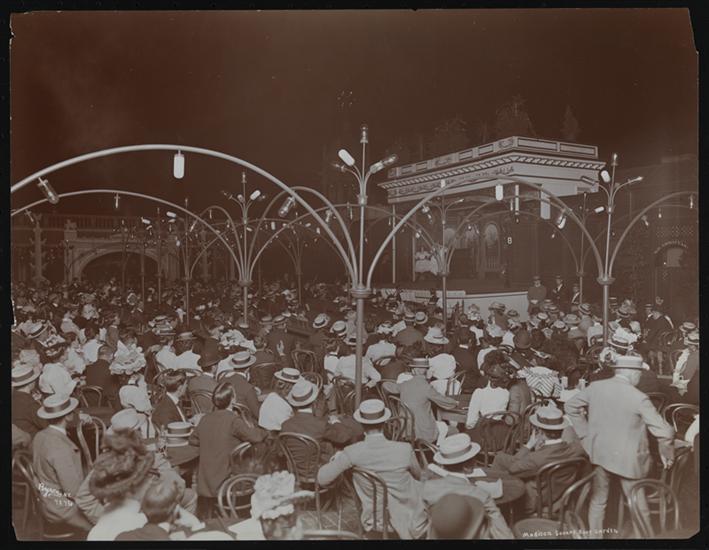
© MCNY
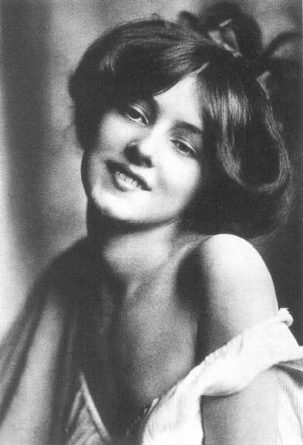 Plenty of drama ensued at Madison Square Garden Theatre’s roof garden, made infamous by the cold blooded murder of architect Stanford White which took place there in 1906. The tragic result of a love triangle played out on the rooftop stage when a jealous millionaire, Harry Thaw, murdered the suspected lover of his wife Evelyn Nesbit, a well-known muse, chorus girl and more recently referred to as “the world’s first supermodel”. Thaw had a notorious cocaine habit and was known to be obsessively jealous of his young bride.
Plenty of drama ensued at Madison Square Garden Theatre’s roof garden, made infamous by the cold blooded murder of architect Stanford White which took place there in 1906. The tragic result of a love triangle played out on the rooftop stage when a jealous millionaire, Harry Thaw, murdered the suspected lover of his wife Evelyn Nesbit, a well-known muse, chorus girl and more recently referred to as “the world’s first supermodel”. Thaw had a notorious cocaine habit and was known to be obsessively jealous of his young bride.
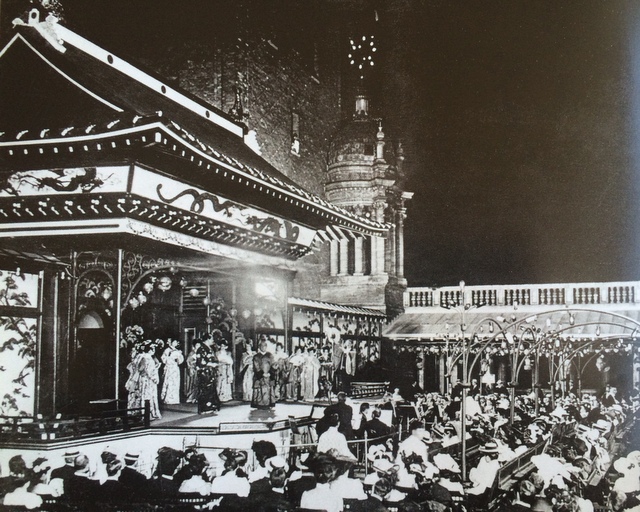
via Lost New York & Untapped Cities
At some point, the roof garden theatre had a Japanese make-over, reflecting America’s fascination with Asian culture at the time. Ten years after White’s murder, the theatre was bankrupt and the new arena was later built uptown in 1925 as the theatre was being demolished. The New York Life Insurance building stands in its place today.
Roof Garden of the American Theatre on 42nd Street
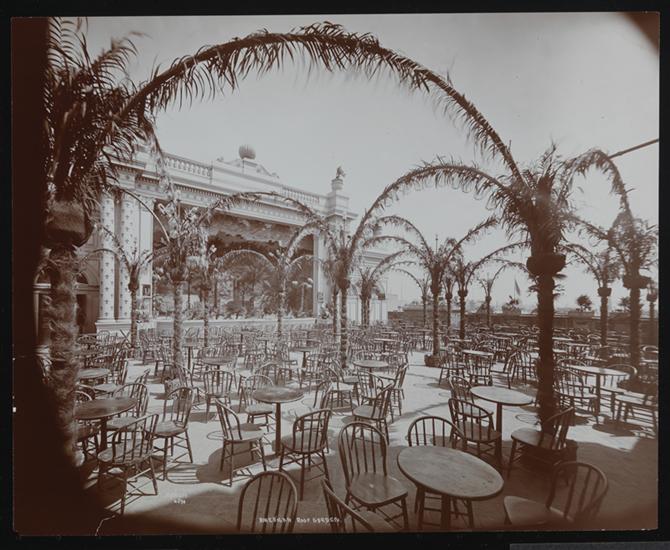
© MCNY
When this charming rooftop theatre first opened, it had both an outdoor and indoor auditorium decorated with twinkling “stars” on a blue ceiling with forest scenes painted on the walls. It later became the Loew’s American Theatre when both auditoriums were switched over to vaudeville to improve poor ticket sales.
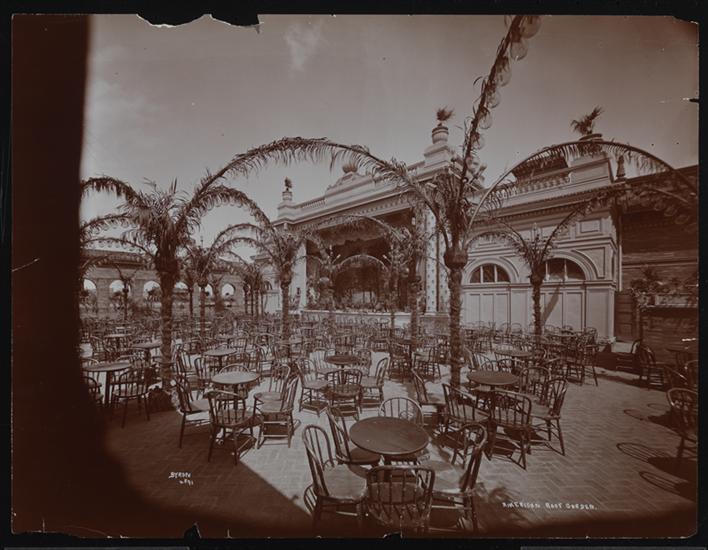
© MCNY
That didn’t work and the theatre announced its closure in 1929, heading for demolition. Ironically, it was briefly saved by the Great Depression when plans for an office tower set to be built in its place were stalled for lack of finances. The theatre reopened to entertain the down and out city with burlesque acts for another year. In 1930, a fire destroyed a large part of the American Theatre and for many years, the site was used as a bizarre combination of offices, apartments and a circus. For the second half of the 20th century, it was used as a parking lot before the 11 Times Square office building was built on top of it.
Century Theatre
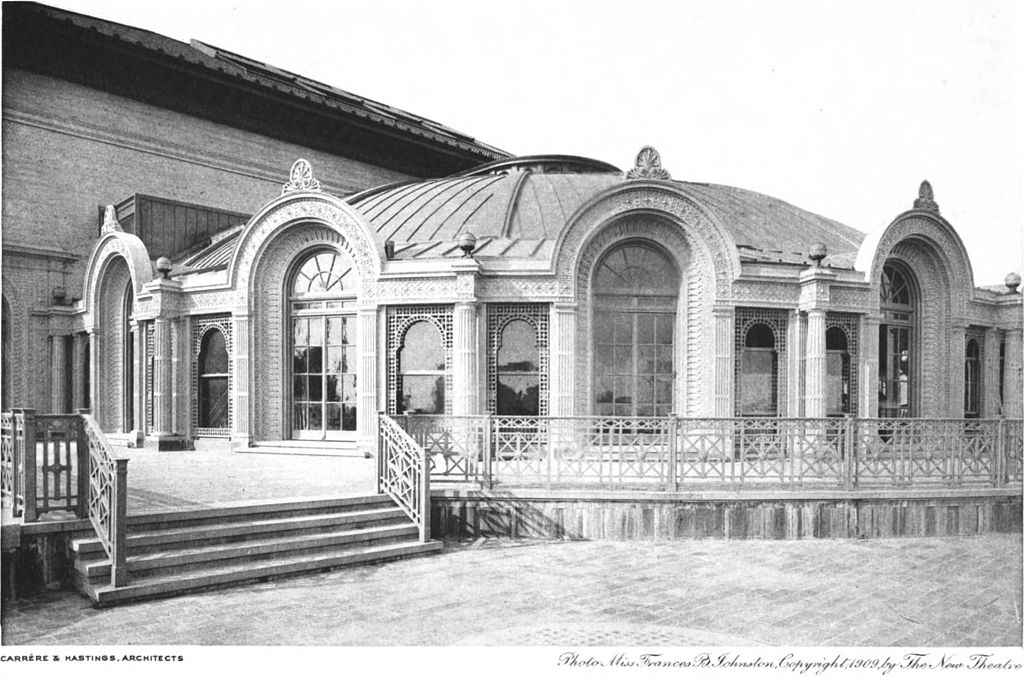
Rooftop Pavillion of the Century Theatre. Frances Benjamin Johnston – The New-York-Architect, November 1909.
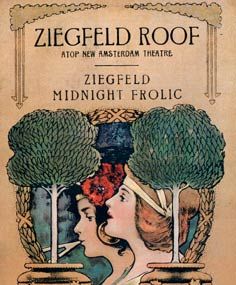 The Century Theatre was located at 62nd Street and Central Park West, noted for its beautiful architecture. After 8 years in business however, the theatre was considered a financial disaster, largely due to poor acoustics and an inconvenient location. In 1917, Florenz Ziegfeld opened the roof garden as a nightclub and named it the Cocoanut Grove, based on the success of a similar venue, Ziegfeld Midnight Frolic at the New Amsterdam Theatre. The theatre was demolished in 1931 and replaced by the Century Apartments building.
The Century Theatre was located at 62nd Street and Central Park West, noted for its beautiful architecture. After 8 years in business however, the theatre was considered a financial disaster, largely due to poor acoustics and an inconvenient location. In 1917, Florenz Ziegfeld opened the roof garden as a nightclub and named it the Cocoanut Grove, based on the success of a similar venue, Ziegfeld Midnight Frolic at the New Amsterdam Theatre. The theatre was demolished in 1931 and replaced by the Century Apartments building.
Japanese Roof Garden
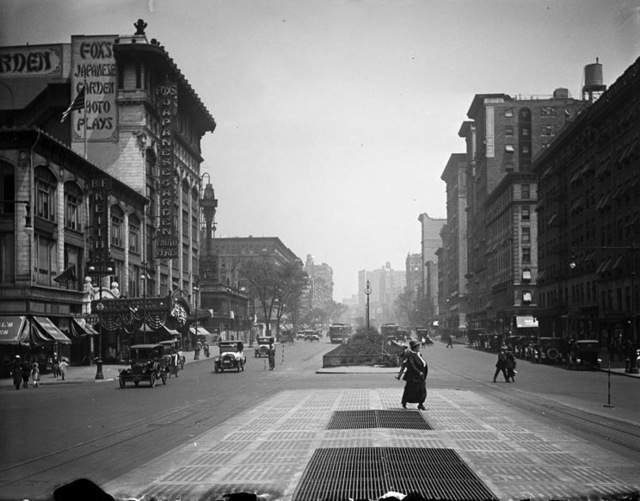
via Cinema Treasures
Do you see the sign on the building to the left of the street? That was William Fox’s Japanese Roof Garden, the first east coast rooftop theatre to receive permission to be equipped for sound in 1929. (I hope they had neighbours that liked to be entertained).
It opened in 1913 with over a thousand seats and was located on Broadway at W. 96th Street.
The Astor Hotel’s Roof Garden
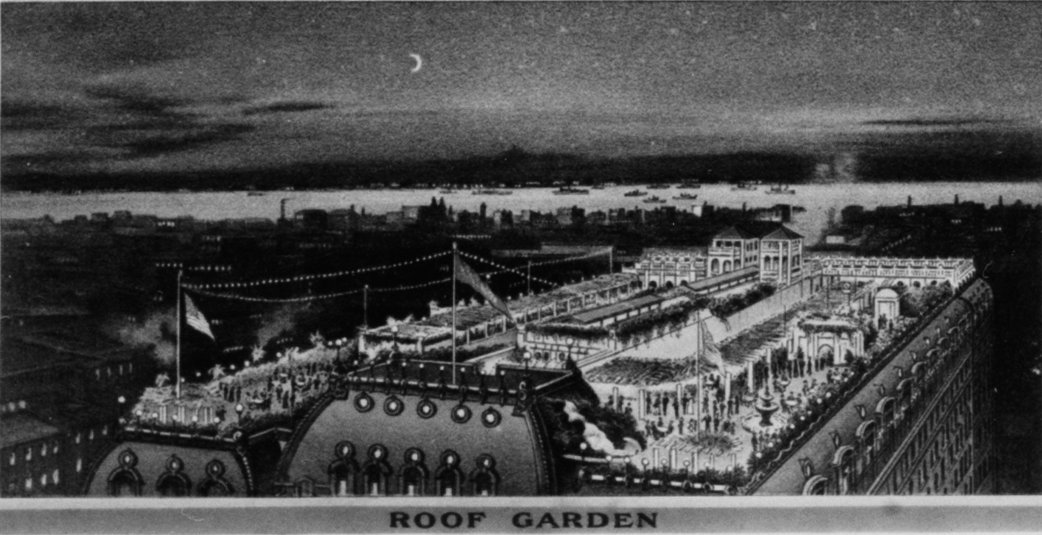
I’ll let this New York Times article from 1920 describe the scene:
Down near Times Square the Hotel Astor Roof Garden and Belvedere Restaurant make it possible for the wayfarer to leave the torrid stretches of Seventh Avenue and in a few moments find himself in a real garden surrounded by flowers. There is the open-air dancing floor and the restaurant is conspicuous for dangling ferns and trailing vines. A unique feature of the restaurant is the gabled-glass roof over which flows a miniature Niagra.
It’s been gone since 1967, but in its heyday, the rooftop boasted a large bandstand for the Big Band era where the kings of swing played for the Gilded-Age New Yorkers, including jazz trombonist Tommy Dorsey and a little-known Frank Sinatra in the earliest days of his music career. The Astor, along with its rooftop, was closed and demolished in 1967. The site is now occupied by a 54-story skyscraper office tower, One Astor Plaza.


